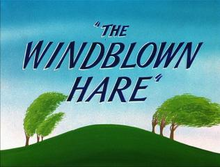
Bugs Bunny is a fictional character created in the late 1930s at Warner Bros. Cartoons and voiced originally by Mel Blanc. Bugs is best known for his featured roles in the Looney Tunes and Merrie Melodies series of animated short films, produced by Warner Bros. Earlier iterations of the character first appeared in Ben Hardaway's Porky's Hare Hunt (1938) and subsequent shorts before Bugs's definitive characterization debuted in Tex Avery's A Wild Hare (1940). Bob Givens, Chuck Jones, and Robert McKimson are credited for defining Bugs's design.

Looney Tunes is an American animated franchise produced and distributed by Warner Bros. It began as a series of short films that originally ran from 1930 to 1969, along with its partner series Merrie Melodies, during the golden age of American animation. Following a revival in the late 1970s, new shorts were released as recently as 2014. The two series introduced a large cast of characters, including Bugs Bunny, Daffy Duck, and Porky Pig. The term Looney Tunes has since been expanded to also refer to the characters themselves.

Pigs in a Polka is a 1943 Warner Bros. Merrie Melodies cartoon series directed by Friz Freleng. The short was released on February 6, 1943.

Cecil Turtle is a fictional character in the Warner Bros. Looney Tunes and Merrie Melodies series of films. Though he made only three theatrical appearances, Cecil has the unusual distinction in that he is one of the very few characters who were able to outsmart Bugs Bunny, and the only one to do so three times in a row and at the rabbit's own game. Cecil often gives Bugs the taunting nickname of "Speedy" when addressing the rabbit.

False Hare is a 1964 Warner Bros. Looney Tunes animated short directed by Robert McKimson. The short was released on July 18, 1964, and stars Bugs Bunny.

Little Red Riding Rabbit is a 1944 Warner Bros. Merrie Melodies cartoon, directed by Friz Freleng, and starring Bugs Bunny. It is a sendup of the "Little Red Riding Hood" story, and is the first time in which Mel Blanc receives a voice credit.

The Looney Looney Looney Bugs Bunny Movie is a 1981 American animated comedy package film with a compilation of classic Looney Tunes/Merrie Melodies Warner Bros. cartoon shorts and animated bridging sequences produced and directed by Friz Freleng, hosted by Bugs Bunny. The new footage was produced by Warner Bros. Animation. It was the first Looney Tunes/Merrie Melodies film with a compilation of classic cartoon comedy shorts produced by Warner Bros. Animation.

Three Little Bops is a 1957 American animated musical comedy film, directed by Friz Freleng and written by Warren Foster. A takeoff on The Three Little Pigs told as a hip, jazzy musical, the short features the voice of Stan Freberg, with music provided by jazz composer/trumpeter Shorty Rogers. It was released by Warner Bros. Pictures on January 5, 1957 as part of the Looney Tunes series.

Hare Force is a 1944 Warner Bros. cartoon in the Merrie Melodies series, directed by Friz Freleng. The cartoon was released on July 22, 1944, and stars Bugs Bunny.
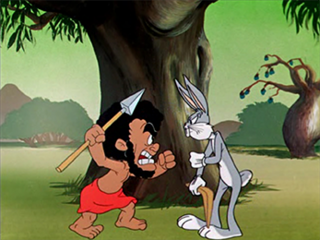
Bushy Hare is a 1950 Warner Bros. Looney Tunes cartoon directed by Robert McKimson. The short was released on November 18, 1950, and stars Bugs Bunny.
The Unruly Hare is a 1945 Warner Bros. cartoon in the Merrie Melodies series directed by Frank Tashlin and written by Melvin Millar. The cartoon was released on February 10, 1945 and stars Bugs Bunny and Elmer Fudd. The film was one of only two Bugs Bunny cartoons directed by Frank Tashlin at Warner Bros., the other being 1946's Hare Remover.
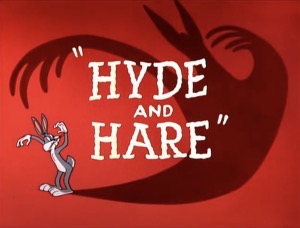
Hyde and Hare is a 1955 Warner Bros. Looney Tunes cartoon, directed by Friz Freleng. The short was released on August 27, 1955, and stars Bugs Bunny. The short is based on Robert Louis Stevenson's 1886 novella Strange Case of Dr Jekyll and Mr Hyde. The cartoon pits Bugs against Dr. Jekyll, who continues to turn into Mr. Hyde. The title is a play on the expression "neither hide nor hair."

Devil May Hare is a 1954 Warner Bros. Looney Tunes cartoon directed by Robert McKimson. The short was released on June 19, 1954, and stars Bugs Bunny and the Tasmanian Devil making his debut.
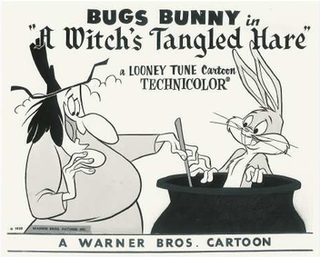
A Witch's Tangled Hare is a 1959 Warner Bros. Looney Tunes theatrical cartoon short directed by Abe Levitow. The short was released on Halloween 1959, and stars Bugs Bunny. Mel Blanc plays voice roles for Bugs Bunny and Sam Crubish, while June Foray voices Witch Hazel. The cartoon makes many references to various plays by William Shakespeare.
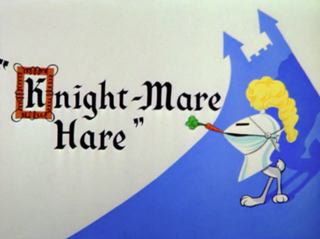
Knight-mare Hare is a 1955 Warner Bros. Merrie Melodies theatrical cartoon directed by Chuck Jones and written by Tedd Pierce. The short was released on October 1, 1955, and stars Bugs Bunny.
The character that would evolve into Bugs Bunny appeared in four cartoon shorts before his first official appearance in Tex Avery's A Wild Hare. While this early version is commonly referred to as "Happy Rabbit", animation historian David Gerstein disputes this, saying that the only usage of the term was from Mel Blanc himself; the name "Bugs Bunny" was used as early as April 1938, from a model sheet made by Charles Thorson which was used for the short Hare-um Scare-um. Bugs was also mentioned by name from an August 1939 review of the short in the Motion Picture Herald.

Now Hare This is a 1958 Warner Bros. Looney Tunes cartoon directed by Robert McKimson and written by Tedd Pierce. The short was released on May 31, 1958, and stars Bugs Bunny.

Bugs Bunny's 3rd Movie: 1001 Rabbit Tales is a 1982 animated comedy film by Friz Freleng. It combines classic Warner Bros. cartoon shorts with new animation, with Bugs Bunny serving as the story host.
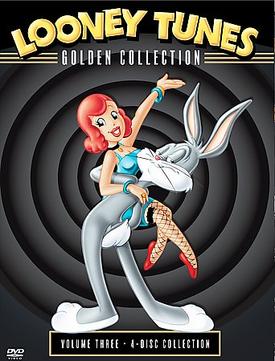
Looney Tunes Golden Collection: Volume 3 is a DVD box set from Warner Home Video that was released on October 25, 2005. It contains 60 Looney Tunes and Merrie Melodies theatrical short subject cartoons, nine documentaries, 32 commentary tracks from animators and historians, 11 "vintage treasures from the vault", and 11 music-only or music-and-sound-effects audio tracks.
